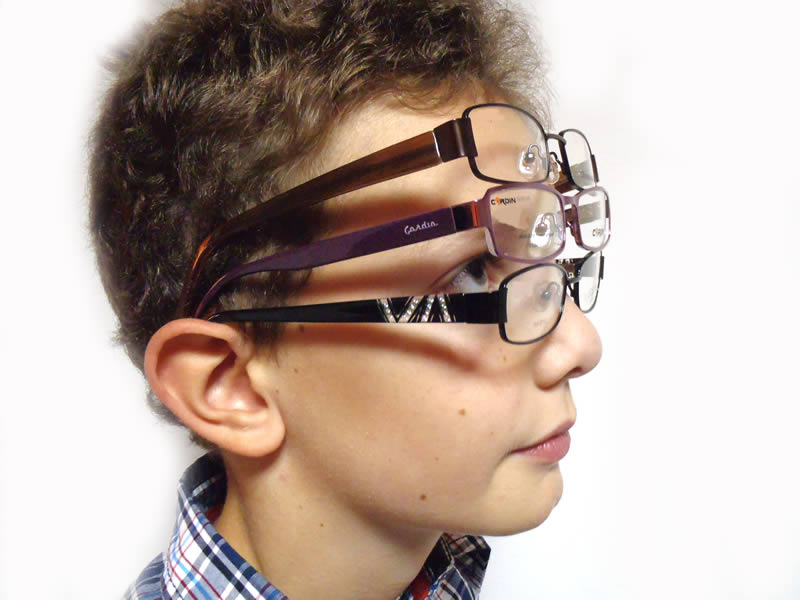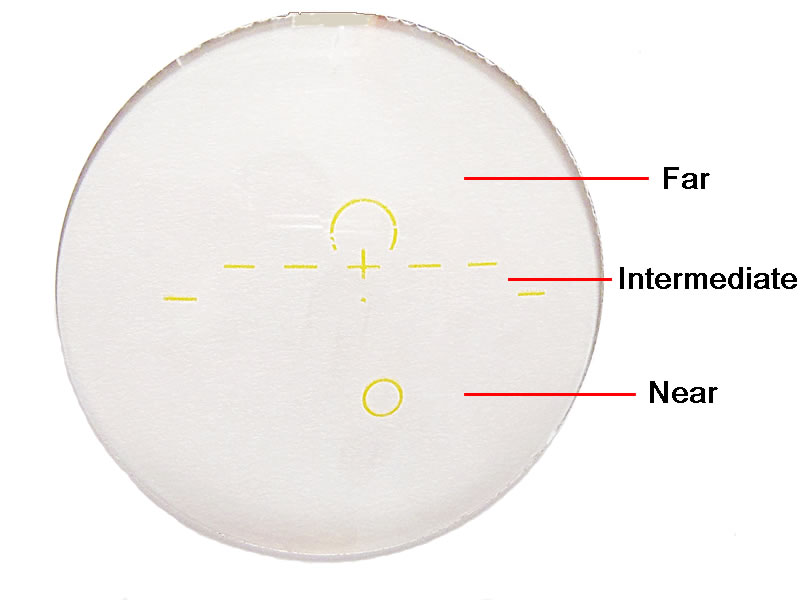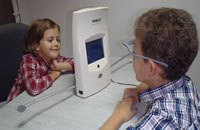Progressive Lenses
How to Get Used Easier With
Progressive lenses (or varifocal lenses) can become an advantageous option when you are 40-45 years old and need reading glasses (have presbyopia). To this is added the distance vision and computer vision problems.
Therefore, theoretically you need al least two pairs of glasses with different diopters.
If you are in this situation, alternatives that are offered to you are:
- Single vision lenses and you’ll have two pairs of glasses
- Bifocal lenses, progressive lenses or trifocal lenses. Using these options, you’ll have only one pair of glasses
My suggestion is progressive lenses.
Why? Because they use the latest technology, superior to bifocals and trifocals and is the convenient alternative compared with mono focal lenses (i.e. two pairs of glasses).
But the choice is up to you, and this is the time to…
First determine if progressive lenses are for you
The varifocal specific lens has more diopters and offers a clear view near, far and everything in between, so all your vision problems are solved elegantly with one pair of glasses.
But have to try them, in order to see if they fit you. If decide to try them, to reduce the adaptation period, next will be helpful:
Helpful Tips
- If you try your first progressive lenses, wear glasses at home first for few days, until you get used to them and only then outside.
- Take note to the optician's advices about when, how and where to look by the three sides of the lens (near, intermediate and distance).
- Wear them as much as possible, even if it's hard at first. As wear them longer, so the quicker you get used to progressives.
- At the beginning, pay more attention at driving cars. Image deformities can occur in mirrors, so you can appreciate out the distances.
- When you walk on stairs and look down, don't lower only your eyes, but lower your head too. Otherwise you look through the near vision diopters of the lens and not see the stairs clearly (I give you this example because of the high rate of accidents).
For More Specific Tips See Also:
Once accustomed to the progressives, you get next:
Advantages of progressive lenses
- They solve all your vision problems: far vision, intermediate and near vision
- They can be manufactured with any of the lens specific coatings: anti-reflective, hardening, photochromic, PC, UV. I suggest you the anti-reflective coating for a higher perception clarity
- This type of lenses can be made from any lens material
- It can be mounted in most frames on the market. I say most because the lens having several diopters, each diopters cover a fixed portion of the lens, so there is a minimum size to be respected for an optimal view at any distance.
- The three distinct parts of the lens are not visible, so you look much better with them
- Because adaptation is more difficult with these lenses, there are companies that offer you accommodation guarantee, which means you have 30 days for get used to them. If you fail, the company will take the lenses back and gives you a pair of bifocals or two pairs of single vision lenses in place
- This type of lenses is always in sight of the major manufacturers, so there are always new technologies on the market that increase visual comfort with these lenses
The latest update in this field is the free form progressives, also known as HD lenses.
Free form means that the lens is personalized for you, so using the HD lens your chances to accommodate increase substantially.
An example of this kind of lenses is the Varilux lenses, impression lenses or gradal individual lenses.
Drawbacks of progressives
- The price is higher than for other types of lenses because manufacturing and specific treatments on the lens costs more
- Requires an adjustment period, greater than for a normal lens from 1 to 3 weeks, and it can give you some discomfort which is usually temporary.
If you fail to adapt after 3 weeks
Return to the optician to see what could be wrong:
- The frame can be the problem, perhaps is not properly positioned on your face. See if you're in this situation with the optician. If the answer is positive, your frame needs to be adjusted so you can see clearly through all the diopters of the lens.
- Wrong prescription for your eyes. That can be the reason for the hard accommodation. In this case, it would be a smart idea to remake your optometric consultation.
- Some people just can not get used with progressives. If you get in this situation, you always have the alternative of bifocals and trifocals, or you can choose the less comfortable practice of wearing two pairs of glasses.
The benefits of progressive lenses are obvious. They are the last generation technology that helps you see clearly close, far and everything in between. The big difficulty in choosing them can be the lack of accommodation, so I can’t tell you if these are the best eyeglasses for you, but you can find out trying them, considering the above tips.
Was this information useful?
1. Like Perfect-Eyeglasses-Guide.com on Facebook.
2. Share this article with your friends:









